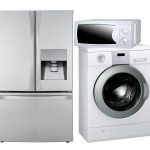In our contemporary world, the issue of maintaining a healthy weight has gained immense attention. With the prevalence of obesity and other weight-related health complications, people are forever on the lookout for practical strategies to control weight. One such strategy you may have overlooked is the concept of a designated snack zone in the kitchen. How can the arrangement of food in your kitchen influence your snacking habits and ultimately your weight? Let’s explore.
The Psychological Influence of a Snack Zone
The environment where you consume your food plays an essential role in your eating behaviors. A designated snack zone is not just about organization; it has a psychological influence on your snacking habits.
Additional reading : What are the best flooring materials for a clean and lean kitchen?
The concept behind a snack zone is simple. It involves designating a specific area in your kitchen for snacks. This may seem trivial, but it has profound psychological implications. When snacks are scattered all over the kitchen, it’s easy to grab one whenever you walk in. However, when you have a specific snack zone, it helps to create a mental association. You’ll only think of snacks when you approach that particular zone.
You see, our minds are programmed to associate specific locations with certain activities. For instance, you associate your bedroom with sleep, the gym with exercise, and the study room with work or study. Similarly, when you have a designated snack zone, you begin to associate that particular area with snacking. This association can help control spontaneous snacking, which often contributes to excessive calorie intake and weight gain.
This might interest you : What are the top 5 energy-efficient appliances that every slimming kitchen should have?
The Role of Portion Control in Weight Management
Portion control plays a crucial role in weight management. Having a designated snack zone can promote portion control, helping you keep tabs on the amount of food you eat in a day.
According to a study by the National Health and Nutrition Examination Survey, children and adults in the U.S. consume an average of 2.2 and 2.7 snacks per day, respectively. However, the problem isn’t the number of snacks consumed per day, but the portion size. When snacks are freely accessible and not portion-controlled, it’s easy for one to overeat.
A designated snack zone helps with this problem. When you restrict your snacks to one area, you can also control the quantity available. This, in turn, can help regulate the portion size of each snack you consume. When you control your portion size, you can significantly reduce your calorie intake, which is a key factor in weight loss.
The Impact of Healthy Snack Choices
A designated snack zone not only helps with portion control and psychological associations, but it can also encourage healthier snack choices.
The foods we choose to eat are often influenced by what is readily available to us. A study involving 96 college students as participants revealed that students ate more fruits and vegetables when they were readily visible and accessible.
The same principle applies to your snack zone. If you stock it with healthy snacks like fruits, nuts, and whole grain crackers, you’re more likely to reach for these when you feel the urge to snack. On the other hand, if your snack zone (or indeed, your entire kitchen) is filled with unhealthy snacks, that’s what you’ll likely eat.
In the long run, consistently choosing healthy snacks can significantly impact your weight. Fruits, vegetables, and whole grains are lower in calories but higher in fiber, which can keep you feeling full and prevent overeating.
Monitoring and Analysis of Food Intake
The final piece of the puzzle is the monitoring and analysis of food intake. A snack zone can visually aid this process.
Having a designated snack zone gives you a visual representation of your snack intake. You can see how much you’re eating and how often. This awareness can be a powerful tool in weight management.
A study published in the Journal of the Academy of Nutrition and Dietetics found that participants who recorded what they ate lost more weight than those who didn’t. While a snack zone isn’t a food diary, it can serve a similar purpose. It can help you monitor what you eat, how much you eat, and how often you eat. That way, you can make necessary adjustments if you find that you’re eating too much or too often.
In conclusion, a designated snack zone in your kitchen may seem like a small intervention, but it has the potential to influence your eating habits significantly. By helping to control spontaneous snacking, encouraging portion control, promoting healthy snack choices, and facilitating the monitoring and analysis of food intake, a snack zone can be an effective tool in weight management. So why not try setting up a snack zone in your kitchen today? It could be the game-changer in your weight loss journey.
Convenience Vs. Consequence: Making Informed Snack Choices
The choices we make about our eating habits are often driven by convenience, and the presence of a snack zone can help govern these choices. According to an analysis in Google Scholar, our tendency to grab a snack is often influenced by the presence and visibility of food. If junk food like chips and candy are conveniently placed and easily accessible, we’re more likely to consume them due to their immediate availability. This is where a snack station comes into play.
A snack station serves as a designated area in your kitchen where you stock your snacks. It’s not about limiting your snack intake, but rather about making informed choices about what you snack on. A well-organized snack station should ideally consist of healthy snacks such as fruits, vegetables, nuts, and whole grains. This can help you replace high-calorie junk foods with healthier alternatives.
By consciously choosing to stock your snack station with healthy snacks, you take control of your energy intake. A Pubmed Google research found that individuals who snacked on fruits and vegetables had a lower energy intake and better weight control compared to those who consumed high-energy, low-nutrient snacks. The key here is to create an environment that encourages healthier food choices and discourages mindless snacking on high-calorie junk food.
Establishing Control and Responsibility: The Snack Zone as a Weight Loss Tool
The impact of a snack zone extends beyond simply making healthy food choices. It’s also about establishing control and taking responsibility for your food intake. Having a snack zone can serve as a visual reminder of your eating habits and can aid in portion control, which is a vital aspect of weight loss.
According to a public health research, individuals tend to underestimate their calorie intake, especially when they consume small snacks throughout the day. However, by having a snack zone, you can keep track of the quantity and frequency of your snacks. This can help you monitor your energy intake and recognize when you might be overeating.
Moreover, a snack zone allows you to be more mindful of your eating habits. Instead of mindlessly grazing throughout the day, you consciously approach the snack zone, open a separate window in your daily routine for snacking, and make deliberate choices about what to eat. This mindfulness can help you establish healthier eating habits and make more informed food choices.
In conclusion, establishing a snack zone in your kitchen may seem like a minor adjustment, but its impact on your weight loss journey can be significant. By influencing your food choice, aiding in portion control, and helping you monitor your food intake, a snack zone can serve as a powerful tool in your weight loss journey. So, why not give it a try? Set up a snack zone in your kitchen today and take a proactive step towards a healthier lifestyle.






